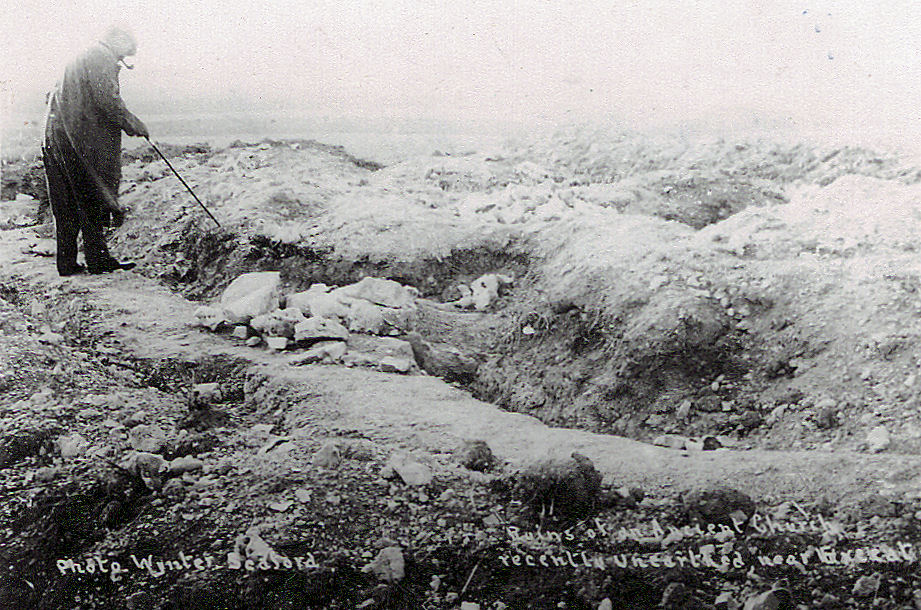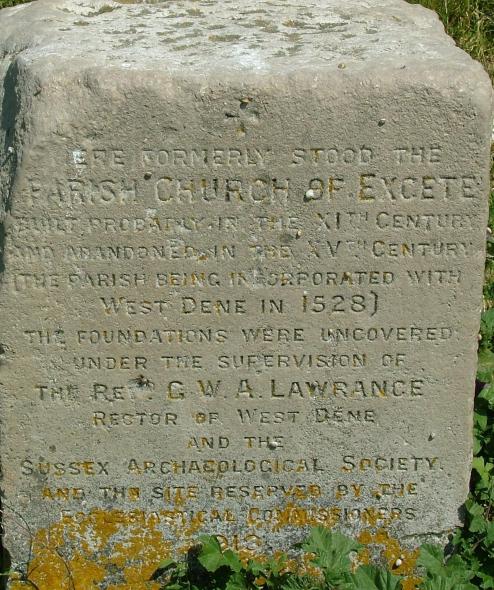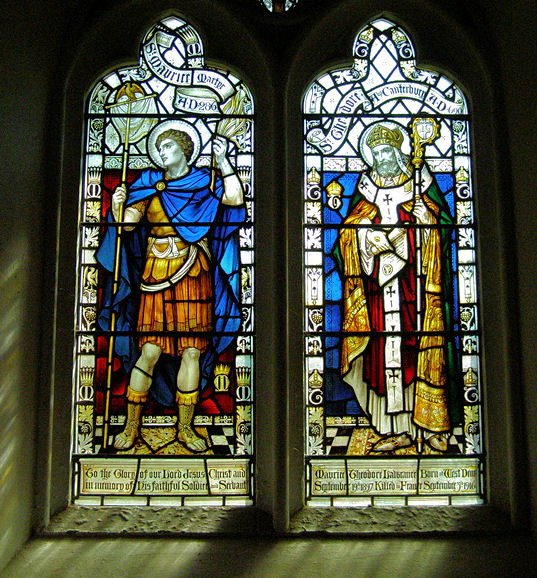Today marks the 100th Anniversary of the death of Maurice Lawrance of West Dean.
The summer of 1913 was dry and hot and Maurice Theodore Lawrance, the 15 year old son of the rector of West Dean Church, was in the fields above the Cuckmere River when he spotted some indentations in the field which appeared to indicate a building of some kind. He told his father the Reverend George William Lawrance who in turn sought the assistance of an antiquarian (A Victorian term for an amateur historian) Mr R.H. Verrall who was living at the nearby Exceat Farmhouse.
They made some preliminary excavations and discovered stone foundations. The matter was referred to the Ecclesiastical Commissioners and permission was granted for the Sussex Archaeological Society to excavate the site. The building they had found was the missing church of Exceat. Exceat was once a small village perched on a blustery hill overlooking Cuckmere Haven.

Rectors for the church dated from 1255 when a pipe-roll mentions “Richard, the Parson at Excete” (A pipe-roll is a record of the annual audit by the Exchequer) But the village was short lived and within a hundred years, it had been sacked and destroyed by the French.
The excavations revealed a tiny church, probably the smallest in Sussex with a nave only 31 feet (9.5 meters) long. The building had a small porch (which would have been needed as the church was on a very exposed spot) and a horseshoe shaped chancel. The walls were very thick, almost 5 feet (1.5 meters) in places and at least one inner wall had traces of plaster on it. The church was tiled, as fragments of roof-tiles were recovered and traces of broken coloured glass fragments showed that there were also stained glass windows. In the centre of the nave was a single burial. (Probably the grave of a former rector)
Nearby, oyster shells and sherds of medieval pottery indicated that there may have been a small settlement around the church, although no trace of the foundations of these buildings were found. The foundation stones were Caen stone and Eastbourne greensand, similar to those at Seaford Church which was built in 1090, Exceat Church was probably built at a similar time – maybe a few years earlier.
The Eastbourne historian, the Reverend Walter Budgen discovered that, after Richard there were 21 further rectors, the last being John Salter in 1469. Salter however was a rector in name only as he had no church and no parishioners. The church had been destroyed by French raids in the early 14th century and many of the parishioners would have died during the black death of 1348-50. He published his finding in Volume 58 of the Sussex Archaeological Collections.
In 1460 Richard Raye and John Algar, the last two Exceat parishioners, petitioned the Bishop of Chichester to come under the jurisdiction of West Dean where the church was obviously flourishing. William Brown was sent by the Bishop to investigate and a tribunal was held in West Dean on 8th April. The request was agreed but the Parish of Exceat remained until 1528 when it was formally merged with adjacent West Dean. The church was described as being “destroyed and razed to the ground and the site of the church profaned” The church foundations were left undisturbed until the excavations of 1913.
After the excavations a large Portland stone block was placed on the site and this is still in position today.

Tragically the young lad who discovered the site was killed only three years later. On 3rd September 1916, eighteen year old Maurice Theodore Lawrance was killed in action at the age of just 18 years. He had been one of the first lads in the area to have joined the Royal Sussex Regiment joining as Private 2110. At the time of his death in France however, he was attached to the Machine Gun Corps with the rank of acting Corporal.
He has no known grave but is commemorated on the huge Thiepval Memorial in northern France and also in two delightful stained glass windows in the south wall of All Saints Church, West Dean, these appropriately depict Saints Maurice and Theodore.

In 2013, 100 years after the discovery of Exceat Church, I joined members of the Cuckmere Archaeological Team to conduct a non-invasive geophysical survey of the area surrounding the church. Now just three years later we remember Maurice on the centenary of his death.



Thank you so much ,I found it most informative
Lord Richard de Lullington
LikeLike